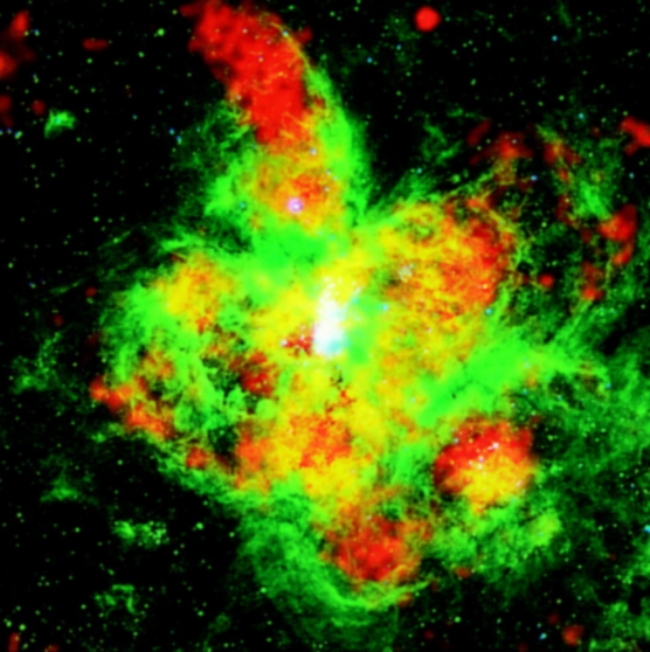
 Credit: Q. D. Wang (Astrophysical Journal, 1999, vol. 510, L139)
Credit: Q. D. Wang (Astrophysical Journal, 1999, vol. 510, L139)
A Tarantula's X-rays
Massive stars are ticking time bombs; they and do extensive damage to their
galaxies, even before they blow up. These stars produce an extremely large
amount of radiation (each star brighter than about 1 million suns) which
produces a large sphere of hot, ionized gas around the star. These stars
also possess strong winds, which produce large, wind blown "superbubbles"
filled with hot, X-ray producing gas. X-ray observations of nearby star
forming regions help astronomers study the interaction of these processes
with the surrounding clouds of gas and dust which gave birth to the stars.
One of the best places to study these phenomena is 30 Doradus, the
so-called "Tarantula Nebula" in the Large Magellanic Cloud (a companion
galaxy to the Milky Way). The image above shows a composite of a ROSAT High
Resolution Imager X-ray observation, shown in red, along with
ultraviolet emission in blue and hydrogen emission from cooler gas in
green; colors combine in regions in regions of more than one type of
emission. The image shows red X-ray bubbles of hot gas surrounded by
cooler dense gas (in green). This image suggest that the hot wind-driven
X-ray bubbles boil off cooler material from the boundary of the shock,
gradually eating away the cool gas. Supernovae explosions of older (or
more massive) stars may have played a role in forming the hot gas, but if so
dozens of supernovae would have been necessary.
Last Week *
HEA Dictionary * Archive
* Search HEAPOW
* Education
Each week the HEASARC
brings you new, exciting and beautiful images from X-ray and Gamma ray
astronomy. Check back each week and be sure to check out the HEAPOW archive!
Page Author: Dr. Michael F.
Corcoran
Last modified March 18, 2002


